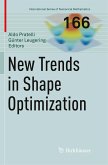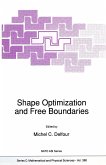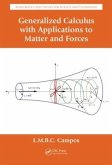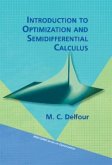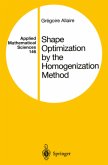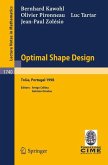This self-contained introduction to the mathematical and computational aspects of sizing and shape optimization enables readers to gain a firm understanding of the theoretical and practical aspects so they may confidently enter the field.
The efficiency and reliability of manufactured products depend on, among other things, geometrical aspects; it is therefore not surprising that optimal shape design problems have attracted the interest of applied mathematicians and engineers. This self-contained, elementary introduction to the mathematical and computational aspects of sizing and shape optimization enables readers to gain a firm understanding of the theoretical and practical aspects so they may confidently enter this field. In contrast to existing texts on structural optimization, Introduction to Shape Optimization: Theory, Approximation, and Computation treats sizing and shape optimization in a comprehensive way, covering everything from mathematical theory (existence analysis, discretizations, and convergence analysis for discretized problems) through computational aspects (sensitivity analysis, numerical minimization methods) to industrial applications. Some of the applications included are contact stress minimization for elasto-plastic bodies, multidisciplinary optimisation of an airfoil, and shape optimization of a dividing tube. By presenting sizing and shape optimization in an abstract way, the authors are able to use a unified approach in the mathematical analysis for a large class of optimization problems in various fields of physics. Audience; Introduction to Shape Optimization: Theory, Approximation, and Computation is written primarily for students of applied mathematics, scientific computing, and mechanics. Most of the material is directed toward graduate students, although a portion of it is suitable for senior undergraduate students. Readers are assumed to have some knowledge of partial differential equations and their numerical solution, as well as modern programming language such as C++ Fortran 90.
Hinweis: Dieser Artikel kann nur an eine deutsche Lieferadresse ausgeliefert werden.
The efficiency and reliability of manufactured products depend on, among other things, geometrical aspects; it is therefore not surprising that optimal shape design problems have attracted the interest of applied mathematicians and engineers. This self-contained, elementary introduction to the mathematical and computational aspects of sizing and shape optimization enables readers to gain a firm understanding of the theoretical and practical aspects so they may confidently enter this field. In contrast to existing texts on structural optimization, Introduction to Shape Optimization: Theory, Approximation, and Computation treats sizing and shape optimization in a comprehensive way, covering everything from mathematical theory (existence analysis, discretizations, and convergence analysis for discretized problems) through computational aspects (sensitivity analysis, numerical minimization methods) to industrial applications. Some of the applications included are contact stress minimization for elasto-plastic bodies, multidisciplinary optimisation of an airfoil, and shape optimization of a dividing tube. By presenting sizing and shape optimization in an abstract way, the authors are able to use a unified approach in the mathematical analysis for a large class of optimization problems in various fields of physics. Audience; Introduction to Shape Optimization: Theory, Approximation, and Computation is written primarily for students of applied mathematics, scientific computing, and mechanics. Most of the material is directed toward graduate students, although a portion of it is suitable for senior undergraduate students. Readers are assumed to have some knowledge of partial differential equations and their numerical solution, as well as modern programming language such as C++ Fortran 90.
Hinweis: Dieser Artikel kann nur an eine deutsche Lieferadresse ausgeliefert werden.


